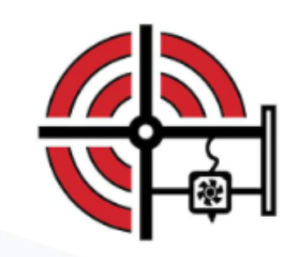In 2021 we wrote an article about “Push Button Metal, the low cost metal 3D printing evolution we are not talking about.” In it, we talked about One Click Metal, Meltio, Xact Metal, and others making affordable metal machines for around $100,000. Since then, these firms have been growing the additive market by improving their devices. This segment is crucial to our future, since there are only so many companies around that can invest $3 million and two years into making laser powder bed fusion (LPBF) work for them. The group of firms that can work with a relatively easy-to-use system they can get for around $100,000 is obviously much larger. Potentially, every single dental lab and machine shop could have a metal 3D printer, if only we can make it easy and inexpensive enough.
Since 2021, E-Plus, Farsoon, and BLT have shaken up the market by making their entry-level machines available around the world. But now, the likes of One Click and BLT may be shaken up themselves by offering newer, less expensive systems. Generally, recent developments have focused on ~$100,000 systems such as the Alpha Laser and the ADDiTEC Fusion S, which to me is a rebadged Alpha Laser, but I may be wrong. These are solid systems, meant to work well in a university or similar environment.
But, we are seeing another exciting segment emerging as of late. Recently, FastForm, AO Metal, 2Create, Phrozen, and RitonLab have touted the imminent release of LPBF systems priced around $50,000. Now this again is a breakthrough in pricing. You’ll still probably have to get some ancillary kits, but this makes LPBF very affordable indeed. We do not yet know if these systems are credible. We also don´t know how safe they are or how well they work. But, if these systems do offer a reliable solution at that price, they could really help grow the market. Let’s sum up the scant details that are out there and look at what this can mean. One thing to take into account is that due to the tariff situation, prices are fluctuating and hard to come by. But generally, these machines should be available for between $50,000 to $100,000.
The $65,000 XM200C by Xact Metal is essentially the founder of this category of 3D printer. You can get it in single or dual configuration with 100 to 400W fiber lasers. With a 125x125x125 mm build volume, the Made in the USA printer is a remarkable value. I think this printer will continue to do well as a system for smaller workshops active in defense and US-based manufacturing.
RitonLab’s Mlab dental printer is tiny, coming in at 60x60x80cm, and released by a firm that has worked in dental for over 27 years; for a few years now, it has also been making SLA printers for dental. The company also has a larger 150 system, powered by a 250W single fiber laser. With a 100x80mm build volume, RitonLab thinks it can print 100 crowns in 2.5 hours. The timing is overall a bit optimistic, perhaps, but this is the core value idea for these machines. 100 crowns in a reasonable time is bound to perk up many a dental lab. The US alone has 200,000 dentists and 2,000 to 9,000 dental labs.
Perhaps the biggest marketing splash has been made by AO Metal, with its US-made AO30, AO50, and AO100 systems. The AO30, with a 30×60 mm build volume and 200-300W fiber laser, is $59,000, while the AO50 is $89,000 and the AO100 is $99,000.
However, all the domain names and branding, phone numbers, and emails of AO Metal lead back to reseller Additive Plus, A Plus Industrial LLC, and Ashkhen Ovsepyan—the CEO of those two firms. What’s more, almost all of those roads lead back to SIU System, a Russian 3D printer reseller and distributor. I can’t find AO staff or people associated with AO itself, or any development staff, engineers, etc. associated with the other firms. Also, it may be the budding journalist in me, but Ashkhen Ovespyan has the same initials as AO. Is AO perhaps only her? Additive Plus did say that the AO printers were developed in-house, but who is doing the developing? And where are they doing it? Is it a Russian system or a rebadged Chinese one? Why is the website so vague, and are there any other people associated with this? AO completely confuses me.
FastForm is a Chinese firm with a dental focus. Started by a student of Shi Yusheng, of Beijing’s Tiertime and much other fame, the company has a very experienced group of founders. Founder Shuai Li and other co-founders are very well connected in China’s 3D printing scene, and alumni from major research groups and very successful firms such as Shanghai Kings abound. Some founders are involved with fiber laser company GW Lasertech, and it reportedly also sources from BWT. The Deskfab X1 has a 300W fiber laser and 100x80mm build area. Notably, all major components and subsystems, including galvo, PLC, and laser, are made in China.
A remarkable entrant into LPBF is Phrozen. Starting out by making cute tiny DLP systems, the company now has a line of chairside systems for dental, as well as an LPBF unit. The FORGE uses a 300W IPG laser and has a build volume of 100x80mm. The amount of products Phrozen pushes out, and the volumes it operates at, make the company an unpredictable entrant in the segment. Will they muscle aside younger firms?
2OneLab’s Create is a 100x100mm build volume system with a 250W IPG laser. The 3D printer is made in Germany, and the company says it assembles 80% of the system itself. 2OneLab claims that purging takes five minutes and powder changes take 20. The system has an orbiting recoater, which should be more efficient than others. 2OneLab states that its recoating blade, plus inexpensive touchscreen, vertical integration, and company software, make the printer cheap.
The Evolution of this Market
These companies could all rise up and perhaps supplant existing players. Or, what would be much more interesting, they could open up the market, making it much larger. CapEx hinders 3D printing adoption, especially in LPBF. Lower machine costs could enable many more applications, parts, and clients. Or maybe these machines could go nowhere, not really finding clients? I reached out to some LPBF experts to see what they thought.
Dr. Tim Lantzsch is the Head of Department, Laser Powder Bed Fusion at Fraunhofer ILT. That venerable institute has been responsible for a lot of powder bed innovation over the decades. He says:
“I think low cost LPBF Systems will be crucial to make the technology accessible to SME. We actually did a fair bit of research in this topic 5 to 10 years ago. However, back then the key hardware (lasers, etc.) was still too expensive to reach target prices below $100,000. So my assumption would be that these systems certainly have the potential to grow the market if they are user-friendly and robust.”
The all important caveat is, of course, the friendliness and robustness of the solution. It’s a good thing for Tim to point out—just because it’s cheap doesn’t mean it’s something that you can easily use every day at the office.
Marten Jurg, of Australian firm Additive Assurance, is specialized in QA and process monitoring for additive.
“I think that they are interesting, though not ready for prime time yet. At some point in the not so distant future they will have a solid value proposition. Not so much today. Today they are not cheap enough to do what Creality did in the polymer market, and not of sufficient ease of use for new users to come on board, like what Bambu did more recently. At the moment, if I was to setup a service bureau, I’d buy second hand EOS and SLM machines. They can be had in reasonable quantities for the same price as a new machine from these new market entrants. They need to do something more than just a cheap machine to really make an impact.”
For professional users, the secondhand market is an important thing to consider. Often overlooked, well-working machines can be had from the likes of Multistation or direct from other users. The Creality and Bambu comparison is one we can all understand: we’re getting there, but we’re not so cheap that it’s an impulse buy, and so easy and reliable that anyone can use them. Keeping that in mind, we’re perhaps in the Makerbot One era of desktop LPBF; or at least, hopefully not in the Thing-O-Matic time frame.
AMPOWER’s Matthias Schmidt-Lehr is a well known consultant in our arena. He thinks that,
“The shift toward lower cost AM machines with industrial performance is accelerating, first in polymers and now in metals. It is a win for users as it lowers barriers to entry and drives broader adoption. For legacy OEMs, it presents a challenge that requires rethinking their portfolios, even at the risk of cannibalizing their existing business.”
Matthias brings up an excellent point. How to deal with this as EOS or BLT? Ignore it, or meet the challenge with a low-cost product of their own? Elevated cost structures and a set idea about what their product is may very well keep established companies from entering this space. I completely agree with Matthias here, and think that at the very least, this has to be studied. Furthermore, I’d urge them to do whatever they could to at least help start up or fund a business that makes a low-cost system profitably. It may seem like a large gap in performance or price, but it is very definitely both a direct competitive threat and opportunity.
LPBF has been an important technology and is experiencing waves of competition. While one segment of the market is fought out with dozens of lasers in million dollar machines, a nascent desktop segment could very well spawn a wave of new competition that could push LPBF into metalworking shops and dental labs worldwide.
Subscribe to Our Email Newsletter
Stay up-to-date on all the latest news from the 3D printing industry and receive information and offers from third party vendors.












